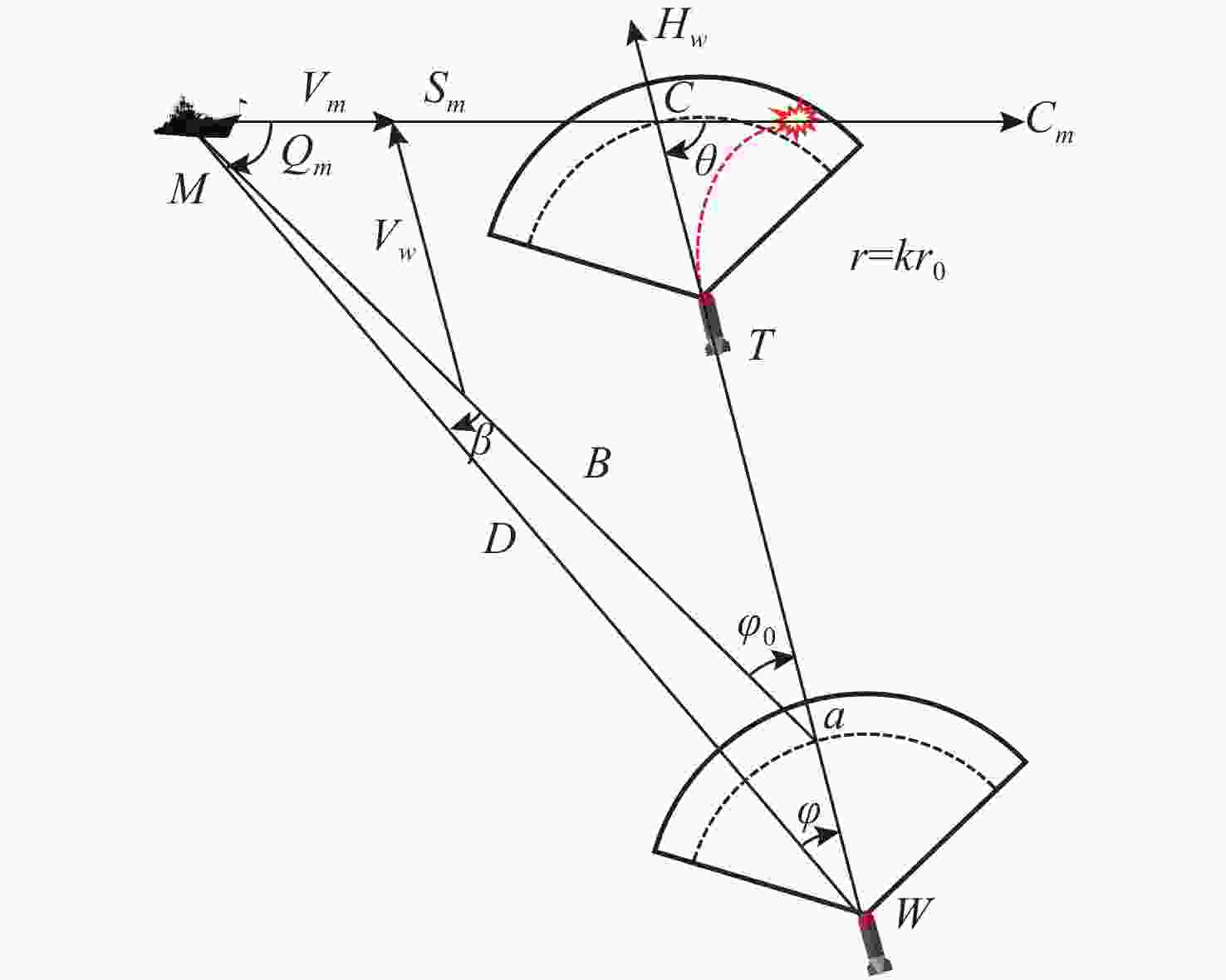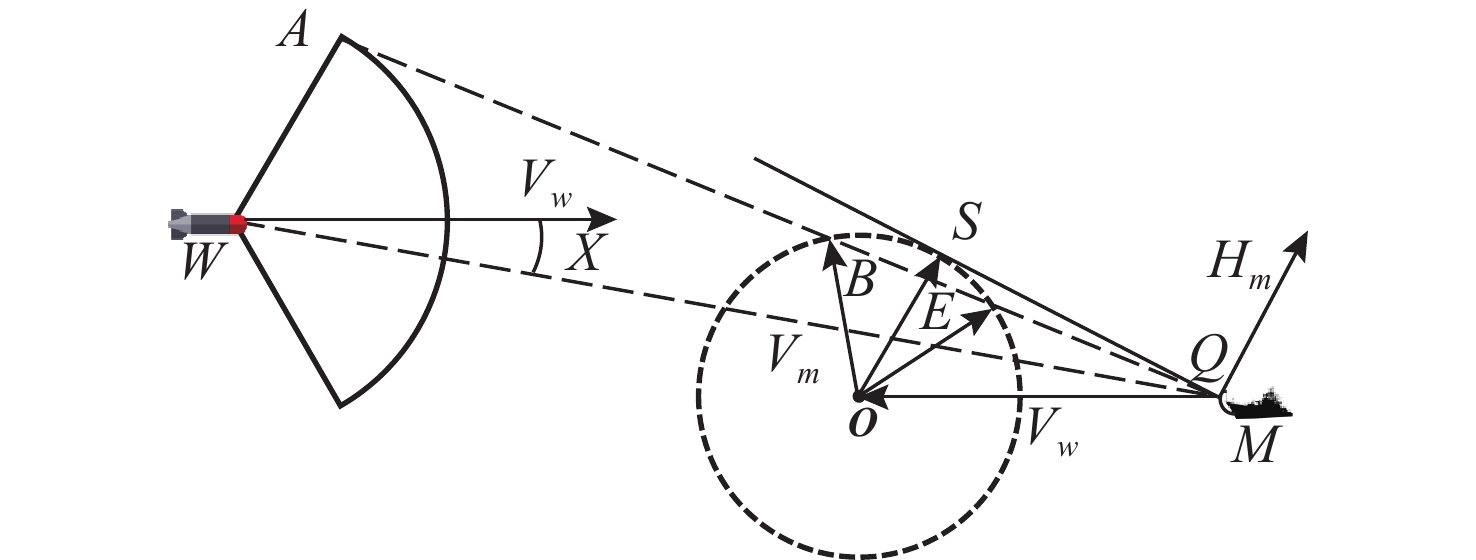Data-driven Autonomous Decision-making Method for the Effective Position of AUV Torpedo Attacks
-
摘要: 自主决策能力是无人水下航行器与有人平台的最显著区别, 要求决策速度快、正确率高、方案可执行。针对自主水下航行器(AUV)发射声自导鱼雷攻击水面舰艇时传统有效阵位决策方法在攻击效果和决策速度方面的不足, 提出将作战仿真与集成学习相结合的自主决策方法。首先通过作战仿真优化声自导鱼雷发现目标概率, 得到不同战场态势下的大量基础数据; 而后设置鱼雷发现概率判断阈值, 将 AUV有效阵位决策转换为二分类问题, 形成分类实验数据; 最后分析支持向量机、随机森林和XGBoost的分类效果, 得出集成学习更适用于该不均衡样本分类问题的结论, 并进一步对模型在多种任务阈值下的适应能力和复杂海洋环境下的泛化能力进行检验。实验结果表明, 该方法在保证鱼雷攻击效果的前提下, 可大幅加快AUV决策速度, 满足攻击决策要求, 为装备攻击规划模块的研究提供参考。Abstract: Autonomous decision-making capability is a distinctive feature that distinguishes unmanned undersea vehicles from manned platforms. This capability is characterized by a short autonomous decision-making time, high decision-making accuracy, and executable decision-making solutions. In this study, an autonomous decision-making method that combines operational simulation with ensemble learning was proposed to overcome the shortcomings of traditional effective position decision-making methods with regard to the attack effect and decision speed when an autonomous undersea vehicle(AUV) launches an attack against a surface ship using an acoustic homing torpedo. First, many basic experimental data sets were obtained by optimizing the probability of acoustic homing torpedo detection targets. Subsequently, a detection probability attack judgment threshold was designed to convert the AUV’s effective position decision-making into a binary classification problem and form the classification experimental data. Finally, the classification performance of the support vector machine, random forest, and XGBoost were analyzed and it was concluded that ensemble learning is more suitable for this unbalanced sample classification problem. Furthermore, the adaptability of this model under multiple task thresholds and its generalization ability in complex marine environments were tested. The test results showed that this method can meet the AUV’s autonomous attack decision-making requirements and significantly accelerate the decision-making speed while ensuring the effectiveness of the torpedo attack. Therefore, this study provides a reference for research on the attack planning module of equipment.
-
表 1 分类实验数据集信息
Table 1. Information of categorized experimental data sets
样本个数 特征维度 正样本数 负样本数 不平衡
比例单个样本
用时8 000 5 1 577 6 423 4.07 4 min 29 s 表 2 混淆矩阵
Table 2. Confusion matrix
实际正类 实际负类 预测正类 TP(true positives) FN(false negatives) 预测负类 FP(false positives) TN(true negatives) 表 3 3种模型分类性能
Table 3. Classification performance of three models
模型 准确率 精确率 召回率 F1 AUC 时间/s SVM 0.937 0.844 0.846 0.845 0.980 19.36 RF 0.959 0.936 0.854 0.893 0.992 0.87 XGB 0.965 0.915 0.910 0.911 0.994 1.58 表 4 不同阈值下模型决策性能比较
Table 4. Comparison of model decision performance under different thresholds
阈值 不平衡率 SVM RF XGB AUC 时间/s AUC 时间/s AUC 时间/s 60% 2.03 0.991 14.57 0.997 1.39 0.998 2.14 65% 2.65 0.987 15.64 0.994 1.12 0.997 2.02 70% 4.07 0.980 19.36 0.992 0.87 0.994 1.58 75% 6.21 0.981 17.52 0.993 0.73 0.996 1.45 80% 9.08 0.983 15.67 0.991 0.86 0.996 1.21 表 5 作战仿真参数调整
Table 5. Adjustment of operational simulation parameters
名称 样本数 ${d_{{\text{ship}}}}$ /n mile ${d_{{\text{torp}}}}$ /n mile ${\sigma _{xy}}$/n mile 海域1 50 3.3 1.2 0.3 海域2 50 3.2 1.1 0.4 海域3 50 2.8 0.9 0.6 海域4 50 2.6 1.3 0.6 海域5 50 2.7 0.8 0.5 海域6 50 3.1 0.9 0.4 -
[1] 陈强. 水下无人航行器[M]. 北京: 国防工业出版社, 2014. [2] 钟宏伟. 国外无人水下航行器装备与技术现状及展望[J]. 水下无人系统学报, 2017, 25(3): 215-225.Zhong Hong-wei. Review and Prospect of Equipment and Techniques for Unmanned Undersea Vehicle in Foreign Countries[J]. Journal of Unmanned Undersea Systems, 2017, 25(3): 215-225. [3] 孟庆玉, 张静远, 王鹏, 等. 鱼雷作战效能分析[M]. 北京: 国防工业出版社, 2003. [4] 陈强. 水下无人系统及其装备发展论证[M]. 北京: 国防工业出版社, 2018. [5] 严代彪, 王树宗. 潜艇发射鱼雷的可攻性问题解析法[J]. 火力与指挥控制, 2004, 29(z1): 15-16. doi: 10.3969/j.issn.1002-0640.2004.z1.006Yan Dai-biao, Wang Shu-zong. Analytic Arithmetic of the Assaultable Problem of Submarine Shooting Torpedo[J]. Fire Control & Command Control, 2004, 29(z1): 15-16. doi: 10.3969/j.issn.1002-0640.2004.z1.006 [6] 李冬梅, 王树宗. 潜艇发射鱼雷的可攻性问题研究[J]. 舰船科学技术, 2004, 26(4): 54-56.Li Dong-mei, Wang Shu-zong. A Study on the Assaultable Problem of Submarine Torpedoing[J]. Ship Science and Technology, 2004, 26(4): 54-56. [7] 吴晓海, 周智超, 杜海. 潜艇鱼雷攻击可攻区域[J]. 火力与指挥控制, 2009, 34(4): 131-133. doi: 10.3969/j.issn.1002-0640.2009.04.037Wu Xiao-hai, Zhou Zhi-chao, Du Hai. Research of the Available Attack Area of Torpedo Launched by Submarine[J]. Fire Control & Command Control, 2009, 34(4): 131-133. doi: 10.3969/j.issn.1002-0640.2009.04.037 [8] 刘勇, 李本昌, 张靖康. 基于鱼雷航程实时预报的潜射线导鱼雷可攻性判断[J]. 指挥控制与仿真, 2009, 31(3): 49-52, 71. doi: 10.3969/j.issn.1673-3819.2009.03.014Liu yong, Li Ben-chang, Zhang Jing-kang. Attacked Decision-making of Submarine Wire-guided Torpedo Based on Real-time Forecast of Torpedo Range[J]. Command Control& Simulation, 2009, 31(3): 49-52, 71. doi: 10.3969/j.issn.1673-3819.2009.03.014 [9] 孙华春, 张会, 李长文. 声自导鱼雷射击的有利提前角优化模型[J]. 舰船电子工程, 2011, 31(8): 40-42,51. doi: 10.3969/j.issn.1627-9730.2011.08.011Sun Hua-chun, Zhang Hui, Li Chang-wen. Optimization of Lead Angle for Acoustic Homing Torpedo[J]. Ship Electronic Engineering, 2011, 31(8): 40-42,51. doi: 10.3969/j.issn.1627-9730.2011.08.011 [10] 贾跃, 宋保维, 赵向涛, 等. 水面舰船对声自导鱼雷防御机动方法研究[J]. 火力与指挥控制, 2009, 34(1): 45-48. doi: 10.3969/j.issn.1002-0640.2009.01.013Jia Yue, Song Bao-wei, Zhao Xiang-tao, et al. A Study on Vessel Evading Method to Acoustic Homing Torpedo[J]. Fire Control and Command Control, 2009, 34(1): 45-48. doi: 10.3969/j.issn.1002-0640.2009.01.013 [11] 崔滋刚, 张仪, 李志伟. 潜射鱼雷攻击水面舰船时的声自导发现概率仿真研究[J]. 计算机测量与控制, 2017, 25(6): 92-94, 119.Cui Zi-gang, Zhang Yi, Li Wei. Simulation Study of Surface Warship Evading Acoustic Homing Torpedo Based on Monte Carlo[J]. Computer Measurement & Control, 2017, 25(6): 92-94, 119. [12] 卢孟维, 马峰, 魏继锋, 等. 舰船规避对追踪段鱼雷弹道散布规律的影响[J]. 鱼雷技术, 2015, 23(5): 379-383.Lu Meng-wei, Ma Feng, Wei Ji-feng, et al. Influence of Vessel Evasion on the Dispersion Law of Torpedo Trajectory in Tracking Section[J]. Torpedo Technology, 2015, 23(5): 379-383. [13] 周志华. 机器学习[M]. 北京: 清华大学出版社. [14] Chen T, Guestrin C. Xgboost: A Scalable Tree Boosting System[C]//Proceedings of the 22nd ACM Sigkdd International Conference on Knowledge Discovery and Data Mining. California, USA: ACM, 2016: 785-794. [15] 冷菲, 李巍. 基于XGBoost对肺鳞癌和肺腺癌的分类预测[J]. 首都医科大学学报, 2019, 40(6): 799-893.Leng Fei, Li Wei. Classification Prediction of Lung Squamous Cell Carcinoma and Lung Adenocarcinoma Based on XGBoost[J]. Journal of Capital Medical University, 2019, 40(6): 799-893. [16] 岳鹏, 侯凌燕, 杨大利, 等. 基于XGBoost特征选择的疾病诊断XLC-Stacking方法[J]. 计算机工程与应用, 2020, 56(17): 136-141.Yue Peng, Hou Ling-yan, Yang Da-li, et al. XLC-Stacking Method for Disease Diagnosis Based on XGBoost Feature Selection[J]. Computer Engineering and Applications, 2020, 56(17): 136-141. [17] 姜少飞, 邬天骥, 彭翔, 等. 基于XGBoost特征提取的数据驱动故障诊断方法[J]. 中国机械工程, 2020, 31(10): 1232-1239. doi: 10.3969/j.issn.1004-132X.2020.10.015Jiang Shao-fei, Wu Tian-ji, Peng Xiang, et al. Data Driven Fault Diagnosis Method Based on XGBoost Feature Extraction[J]. China Mechanical Engineering, 2020, 31(10): 1232-1239. doi: 10.3969/j.issn.1004-132X.2020.10.015 [18] 王雅琳, 郭佳, 刘都群. 2018年水下无人系统发展综述[J]. 无人系统技术, 2019, 2(4): 20-25.Wang Ya-lin, Guo Jia, Liu Du-qun. Summary of the Development of Unmanned Undersea Systems in 2018[J]. Unmanned Systems Technology, 2019, 2(4): 20-25. [19] 陈颜辉. 水面舰艇防御鱼雷原理与应用[M]. 北京: 国防工业出版社, 2015. [20] 吴鹏, 张会, 张文玉. 潜艇安全走出水面搜索带条件分析和方案优化方法[J]. 舰船科学技术, 2012, 34(6): 95-97. doi: 10.3404/j.issn.1672-7649.2012.06.023Wu Peng, Zhang Hui, Zhang Wen-yu. The Condition for Submarine Exit Ship’s Search Zone Safely and the Methods for Exit Scheme Optimization[J]. Ship Science and Technology, 2012, 34(6): 95-97. doi: 10.3404/j.issn.1672-7649.2012.06.023 [21] 李浩, 朱焱. 基于梯度分布调节策略的Xgboost算法优化[J]. 计算机应用, 2020, 40(6): 1633-1637.Li Hao, Zhu Yan. Xgboost Algorithm Optimization Based on Gradient Distribution Harmonized Strategy[J]. Journal of Computer Applications, 2020, 40(6): 1633-1637. [22] Akiba T, Sano S, Yanase T, et al. Optuna: A Next-Generation Hyperparameter Optimization FrameWork[C]//The 25th ACM SIGKDD Conference on Knowledge Discovery and Data Mining. Anchorage AK USA: Association for Computing Machinery, 2019: 2623-2631. -





 下载:
下载:












